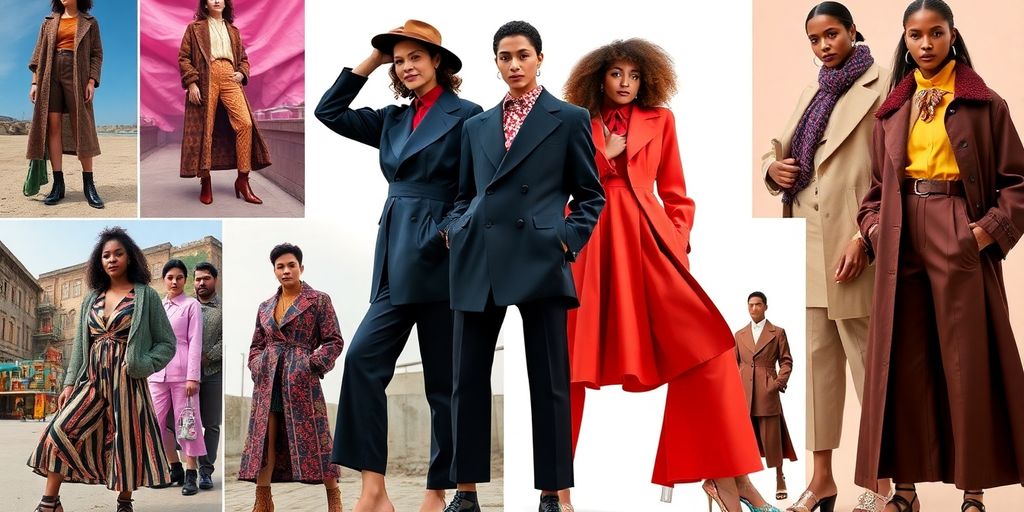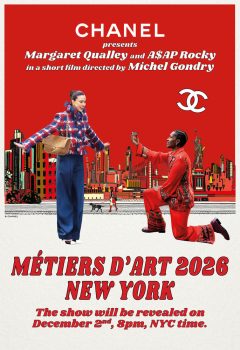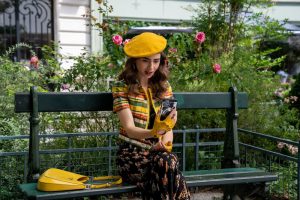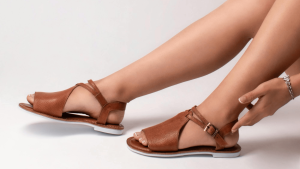Fashion documentaries have come a long way, evolving into a unique blend of storytelling and style. These films not only showcase the glitz and glam of the fashion world but also dive into its history, culture, and the people who shape it. From the early days of film to today’s digital platforms, the documentary fashion industry has grown, offering audiences a front-row seat to the ever-changing world of fashion. It’s a fascinating journey that explores not just clothes, but the stories behind them.
Key Takeaways
- Fashion documentaries blend storytelling with style, offering a unique view into the fashion world.
- The evolution of technology has significantly impacted how fashion stories are told and shared.
- Key figures in the industry have used documentaries to highlight cultural and societal issues.
- Cinematography plays a crucial role in capturing the essence and mood of fashion.
- The future of fashion documentaries looks promising with digital platforms expanding their reach.
The Rise of the Documentary Fashion Industry

Historical Context and Origins
Fashion documentaries have a rich history, tracing back to the early days of cinema when they sought to capture the essence of style and design. Initially, these films served as a means to document the evolution of fashion trends and the personalities behind them. Over time, they evolved into a unique storytelling medium, offering insights into the cultural and social dynamics of different eras. The early documentaries were simple, often focusing on runway shows or designer interviews, but they laid the groundwork for more complex narratives.
Influence of Technology on Fashion Documentaries
The advent of digital technology has revolutionized the way fashion documentaries are produced and consumed. With the rise of streaming platforms and social media, these films have become more accessible to a global audience. This technological shift has not only expanded the reach of documentaries but also allowed for more innovative storytelling techniques. The use of high-definition cameras and advanced editing software enables filmmakers to create visually stunning portrayals of the fashion world. Moreover, the integration of virtual reality and augmented reality offers viewers an immersive experience, bringing them closer to the fashion industry than ever before.
Key Figures in the Evolution of Fashion Documentaries
Several individuals have played pivotal roles in shaping the landscape of fashion documentaries. Directors like Loïc Prigent and filmmakers such as Andrew Rossi have created iconic films that delve deep into the fashion industry. Their works often feature interviews with influential designers, models, and editors, providing an insider’s view of the fashion world. These key figures have not only documented the evolution of fashion but have also influenced public perception and understanding of the industry. By highlighting the stories of trailblazers and innovators, they have contributed to the growing popularity and significance of fashion documentaries.
Fashion documentaries serve as a bridge between the glamorous world of haute couture and the everyday viewer, offering a glimpse into the creativity and challenges that define the industry. As technology continues to evolve, so too will the ways in which these stories are told, ensuring that fashion documentaries remain a vital part of the cultural landscape.
Narrative Techniques in Fashion Documentaries
Biographical Storytelling
In fashion documentaries, biographical storytelling is all about exploring the lives of designers, models, or other influential figures. These narratives dig deep into personal histories, unraveling the experiences and challenges that have shaped their careers. Biographical documentaries often provide a more personal connection to the audience, allowing viewers to see the human side of fashion icons. This approach not only highlights their professional achievements but also their personal growth and struggles.
Event-Centric Narratives
Event-centric narratives focus on specific moments or happenings within the fashion world. Whether it’s a groundbreaking fashion show or the launch of a new collection, these documentaries capture the excitement and energy surrounding these pivotal events. By centering on these moments, filmmakers can convey the suspense and drama that often accompany major fashion milestones. This style of storytelling is particularly effective in showcasing the fast-paced, ever-changing nature of the fashion industry.
Exploring Broader Fashion Trends
Documentaries that explore broader fashion trends take a step back to look at the industry as a whole. They examine how trends emerge, evolve, and influence both designers and consumers. This narrative style often incorporates interviews with industry experts, historical footage, and contemporary examples to provide a comprehensive view of fashion’s impact on society. By doing so, these documentaries not only educate viewers about the dynamics of fashion but also encourage them to reflect on its cultural significance.
Fashion documentaries use a variety of narrative techniques to engage audiences, from personal stories to event-focused narratives. These approaches help to create a rich tapestry that reflects the multifaceted nature of the fashion world.
Cultural Impact of Fashion Documentaries
Fashion as a Reflection of Society
Fashion documentaries are more than just about clothes; they capture the essence of cultural dynamics. They show how fashion mirrors societal issues like identity, race, and economic disparity. These films often highlight designers who push boundaries and challenge cultural norms. By doing so, fashion becomes a lively conversation that both preserves and transforms traditions.
Fashion documentaries serve as a bridge, connecting different communities and promoting understanding and respect.
Promoting Diversity and Inclusivity
In recent years, fashion documentaries have spotlighted the push for greater representation. They showcase designers and brands that champion diversity in race, body type, and cultural expressions. This evolution in fashion narratives is crucial for fostering a more inclusive industry.
- Highlighting diverse voices and talents.
- Challenging traditional beauty standards.
- Encouraging a wider range of stories and perspectives.
Challenging Cultural Stereotypes
Fashion documentaries often tackle contemporary issues like cultural appropriation. They provide a platform for discussion and education, helping to challenge and change stereotypes. By featuring designers who question and redefine cultural boundaries, these films become powerful tools for cultural dialogue.
Fashion documentaries are not just about style; they are a form of non-verbal communication that unites people from different backgrounds.
For example, Beyoncé’s influence on fashion can be seen as a profound cultural impact, reflecting her music and lifestyle choices. Beyoncé has not only shaped the music industry but also left a mark on fashion, highlighting its role as a cultural force.
The Role of Cinematography in Fashion Documentaries
Setting the Visual Tone and Mood
Cinematography is like the heartbeat of fashion documentaries, setting the visual tone and mood that draws viewers into the world of style. Through professional lighting and dynamic camera angles, filmmakers create an atmosphere that feels both intimate and grand. Lighting, in particular, enhances the textures and colors of fabrics, making each piece of clothing come alive on screen. By carefully choosing how scenes are lit, cinematographers can evoke emotions, whether it’s the excitement of a runway show or the quiet beauty of a designer’s studio.
Capturing the Essence of Fashion
To capture the essence of fashion, documentaries rely on a mix of close-ups and wide shots. Close-ups allow the audience to appreciate the minute details of a garment—the stitching, the fabric, the craftsmanship. Meanwhile, wide shots are used to present the grandeur of fashion shows or the bustling energy of a design studio. This balance helps convey the full story of fashion, from the intricate details to the larger-than-life presentations. Filmmakers often employ techniques like handheld cameras to add a sense of immediacy and realism, making viewers feel as though they’re part of the scene rather than mere spectators.
Techniques for Engaging Storytelling
Engaging storytelling in fashion documentaries often involves a blend of visuals and narratives. Filmmakers might use cutaway shots to break the monotony and provide additional context, such as showing behind-the-scenes moments or highlighting the chaos backstage. This approach not only adds depth to the story but also keeps the audience engaged by offering different perspectives. Additionally, the use of music and color grading can subtly influence the mood, enhancing the emotional impact of the story. By weaving together these elements, fashion documentaries become more than just about clothes—they tell a story about creativity, culture, and the people who shape the fashion world.
In fashion documentaries, cinematography isn’t just about capturing clothes on film. It’s about telling a story that resonates with the audience, making them feel the passion and artistry behind every stitch and design. The camera becomes a storyteller, bringing the vibrant world of fashion to life in ways that words alone cannot fully express.
For those interested in exploring the intersection of photography and fashion, this collection of photography-related content offers a wealth of resources and insights.
Themes Explored in Fashion Documentaries
Fashion documentaries are like a backstage pass to the world of style, offering a peek into the complexities and stories behind the clothes we see. They cover a range of themes that highlight the industry’s diverse and dynamic nature. Let’s dive into some of the key themes these documentaries explore.
Sustainability and Ethical Fashion
In recent years, there’s been a growing focus on sustainability and ethical practices in the fashion industry. Documentaries like “Loved Clothes Last” shed light on the environmental impact of fast fashion and encourage viewers to rethink their consumption habits. These films often emphasize the importance of sustainable practices, such as using eco-friendly materials and promoting fair labor conditions. By showcasing the efforts of designers and brands committed to ethical fashion, these documentaries inspire a shift towards more responsible consumer behavior.
The Journey of Iconic Designers
Fashion documentaries often celebrate the lives and careers of iconic designers who have left a lasting impact on the industry. Through intimate storytelling and behind-the-scenes footage, these films reveal the creative processes and personal challenges faced by designers like Alexander McQueen. By exploring their journey from humble beginnings to global recognition, viewers gain an appreciation for the artistry and dedication required to succeed in the fashion world.
Historical and Contemporary Fashion Trends
Exploring both historical and contemporary fashion trends, documentaries provide a comprehensive look at how style has evolved over the years. They delve into the influences of different eras, such as the Roaring Twenties or the Swinging Sixties, and how these periods have shaped modern fashion. Additionally, these films examine the impact of cultural, social, and political changes on fashion trends, offering viewers a deeper understanding of the industry’s evolution.
Fashion documentaries serve as a bridge between the past and the present, allowing us to see how historical events and cultural shifts have shaped the clothes we wear today. They remind us that fashion is not just about aesthetics, but also a reflection of societal values and aspirations.
In summary, fashion documentaries are a rich tapestry of themes that reflect the industry’s multifaceted nature. From sustainability to the stories of legendary designers, these films offer a unique lens through which we can explore the ever-evolving world of fashion.
The Future of the Documentary Fashion Industry

Emerging Trends and Innovations
The documentary fashion industry is on the brink of a new era, driven by technological advancements and shifting audience expectations. Digital fashion is transforming the landscape, with brands like Gucci and Burberry integrating the metaverse, augmented reality, and NFTs into their storytelling. This fusion of technology and fashion allows for immersive experiences that captivate viewers and redefine how fashion narratives are shared.
- Augmented Reality (AR): AR is enhancing the way audiences interact with fashion documentaries, offering virtual try-ons and interactive storytelling.
- Virtual Reality (VR): VR provides a 360-degree view of fashion shows and behind-the-scenes footage, creating a more engaging viewer experience.
- Blockchain: NFTs and blockchain technology are being explored for authenticating digital fashion assets and ensuring transparency in the fashion supply chain.
The Impact of Digital Platforms
Digital platforms are reshaping how fashion documentaries are produced and consumed. Streaming services like Netflix and Amazon Prime Video have made these documentaries more accessible to a global audience. This accessibility is crucial for promoting diverse voices and stories within the fashion industry.
“Digital platforms not only broaden the reach of fashion documentaries but also democratize the fashion narrative, allowing for a wider range of perspectives and stories to be told.”
- Global Reach: Online platforms enable documentaries to reach audiences worldwide, breaking geographical barriers.
- Interactive Features: Viewers can engage with content through polls, comments, and social media integration, fostering a community around the documentary.
- On-Demand Viewing: The convenience of watching documentaries anytime, anywhere, enhances viewer engagement and interest.
Predictions for the Next Decade
Looking ahead, the documentary fashion industry is poised for significant growth and evolution. As digital and physical realities continue to merge, fashion documentaries will likely explore themes of identity, sustainability, and cultural expression in new and exciting ways.
- Sustainability Focus: Documentaries will increasingly highlight sustainable fashion practices and the industry’s environmental impact.
- Cultural Narratives: There will be a greater emphasis on stories that reflect diverse cultural backgrounds and experiences.
- Technological Integration: Continued advancements in technology will lead to more innovative storytelling techniques and immersive experiences.
The future of the documentary fashion industry is bright, with endless possibilities for creativity and cultural exploration. As technology continues to evolve, so too will the ways in which fashion stories are told and experienced.
Conclusion
In wrapping up our journey through the world of fashion documentaries, it’s clear that these films do more than just showcase clothes and designers. They open up a window into the heart of the fashion industry, revealing the creativity, challenges, and cultural shifts that shape it. From the glitz of runway shows to the personal stories of designers, these documentaries offer a rich tapestry of insights. They remind us that fashion is not just about trends but also about storytelling, identity, and change. As we continue to watch and learn, these films will keep inspiring us to see fashion as a powerful form of expression and a mirror reflecting the world around us.
Frequently Asked Questions
What is a fashion documentary?
A fashion documentary is a film that explores the world of fashion, showing the creativity, challenges, and cultural impact of the industry.
How do fashion documentaries tell their stories?
Fashion documentaries use storytelling techniques like biographies, event-focused narratives, and broader fashion trends to engage viewers.
Why are fashion documentaries important?
They highlight fashion’s role in society, promote diversity, and challenge stereotypes, helping viewers understand fashion’s cultural impact.
What role does cinematography play in fashion documentaries?
Cinematography sets the mood and tone, capturing the essence of fashion through lighting, camera angles, and close-ups to enhance storytelling.
What themes are common in fashion documentaries?
Common themes include sustainability, iconic designers’ journeys, and historical and contemporary fashion trends.
What is the future of fashion documentaries?
The future includes emerging trends, digital platforms, and predictions for the next decade in the fashion documentary industry.
Read More:

Peyman Khosravani is a global blockchain and digital transformation expert with a passion for marketing, futuristic ideas, analytics insights, startup businesses, and effective communications. He has extensive experience in blockchain and DeFi projects and is committed to using technology to bring justice and fairness to society and promote freedom. Peyman has worked with international organizations to improve digital transformation strategies and data-gathering strategies that help identify customer touchpoints and sources of data that tell the story of what is happening. With his expertise in blockchain, digital transformation, marketing, analytics insights, startup businesses, and effective communications, Peyman is dedicated to helping businesses succeed in the digital age. He believes that technology can be used as a tool for positive change in the world.











